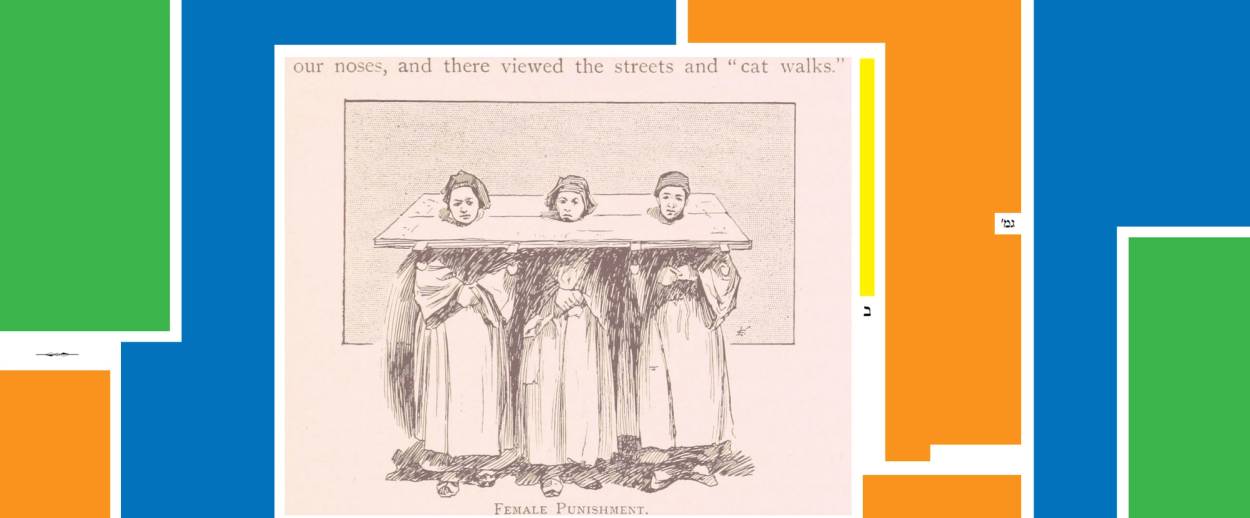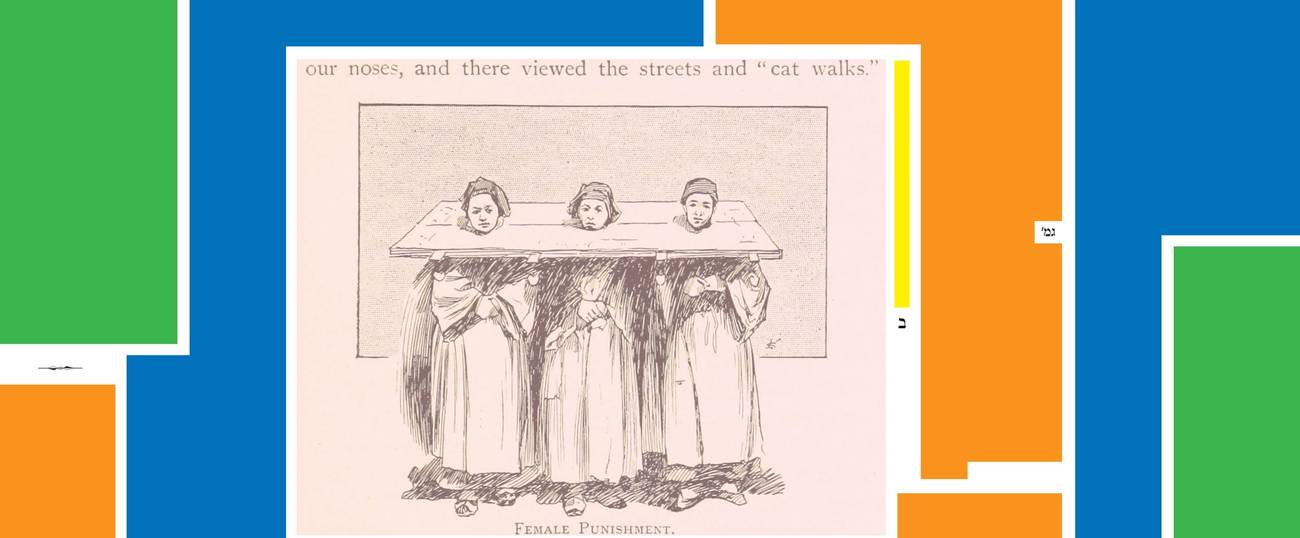Literary critic Adam Kirsch is reading a page of Talmud a day, along with Jews around the world.
Should women study Torah? Today, most Jews would answer that question with a resounding yes—and not only Reform and Conservative Jews. Even Chabad, on the evidence of its website TheJewishWoman.org, sees the rise in women’s Torah study as an unambiguously good thing, evidence of “women’s deep desire to achieve spiritual fulfillment through talmud Torah.” (The same source offers a reassurance that a woman’s desire to study Torah is not necessarily a product of “contentious motives,” such as feminism.) But ultra-Orthodox, or Haredi, Jews still exclude women from Torah study, and in this week’s Daf Yomi reading, we saw that the rabbis themselves were divided on the issue. The basic rule is that the mitzvah of Torah study, like many mitzvot, is not binding on women the way it is on men; when women study Torah, they are not fulfilling a commandment but doing so voluntarily.
But this leaves open the question whether this voluntary commitment is a good thing or a dangerous one—and here the rabbis disagree. As we read this week in Sota 20a, “Rabbi Eliezer says: Anyone who teaches his daughter Torah is teaching her promiscuity.” This harsh saying surprises the rabbis of the Gemara, who ask: “Could it enter your mind to say that teaching one’s daughter Torah is actually teaching her promiscuity?” This would suggest that the Torah somehow encourages promiscuous behavior, which is surely not the case. Rather, Rabbi Abbahu explains, it is not so much the content of the Torah as the mental training it provides that is dangerous. Abbahu quotes Proverbs to the effect that “wisdom dwells with cunning”: A woman who becomes wise by studying Torah will also become cunning enough to try to get away with sexual immorality.
The misogyny here is obvious: The Talmud is constantly exhorting men to Torah study, without ever fearing that their wisdom might turn into cunning. There is something about women, the rabbis believe, that makes them especially prone to sexual misbehavior. Rabbi Yehoshua makes this explicit in the mishna when he says, “A woman desires to receive a kav of food and a sexual relationship rather than nine kav of food and abstinence.” (As a measure of volume, a kav is a bit more than a quart.) For women, sexual appetite is stronger than the appetite for food; but this is apparently not true of men, for whom sex is less a compulsion than a religious duty to be performed out of obligation. The idea that women want sex more than men appears in many guises throughout the Talmud, as when the rabbis characterize sex as something that husbands owe their wives, rather than vice versa. Today, this may read like sex-positivity, but clearly that is not how the rabbis understood it.
Yet the mishna also records an opposing view. “Ben Azzai states: A person is obligated to teach his daughter Torah.” But this obligation is not the same as the obligation to teach your sons Torah, which comes from God. Rather, Ben Azzai suggests, you should teach your daughters Torah for a peculiar prudential reason, having to do with the ritual of the sota, which is the main subject of Tractate Sota. When a sota, a woman suspected of adultery, undergoes the biblically prescribed ritual test, she is forced to drink a potion the rabbis describe as “the waters of bitterness.” If she is guilty of infidelity, the Talmud explains, she dies a repulsive death instantly: “She does not manage to finish drinking before her face turns green and her eyes bulge, and her skin becomes full of protruding veins.” The Gemara expands on this horror-movie transformation: The sota also begins to menstruate, since “fear relaxes” her muscles and causes her blood to flow, and then she drops dead.
There is, however, a way for even a guilty sota to avoid this instant death. If she has gained merit in the eyes of God through Torah study, her punishment can be, not canceled, but significantly delayed, for a period of up to three years. And this is the reason why Ben Azzai tells parents to teach their daughters Torah, so that if they end up facing the bitter waters they won’t die on the spot. In the Gemara, however, this idea is challenged, and Ravina offers an alternative explanation. The way women gain merit, he says, is not through studying Torah themselves, but by enabling their husbands and sons to study it, “waiting for their husbands until they come home from the study hall.” In this way, Ravina closes the loophole that Ben Azzai opened up: Not even in the case of becoming a sota is it helpful for a woman to study Torah. The whole discussion leaves the impression that the rabbis are as eager to find reasons why women should not study Torah as they are to find reasons why men should.
In the course of this debate, the rabbis raise the larger question of whether and how the performance of mitzvot offers a tangible benefit. The Talmud often invokes the belief that a person engaged in performing a mitzvah is immune to harm. In Sota 21a, the Gemara analyzes this idea with reference to a verse from Proverbs, “For the mitzvah is a lamp and the Torah is a light.” By comparing mitzvot to a lamp and the Torah itself to the light of the sun, the verse indicates their relative power to banish darkness and evil. A lamp banishes the darkness only while it is actually being carried; even so, a mitzvah protects us only while we are performing it. The sun, by contrast, lights up the whole world “forever”; so too, the knowledge gained by Torah study protects us forever, in this world and the next. Rav Yosef offers a more psychologically complex formulation of this idea. In his view, we need protecting not just against external threats, but against our own evil inclination; and it is this temptation that mitzvot and Torah help us to overcome.
This aggadic discussion came at the end of a week’s reading that was mostly devoted to fine points of halachah, having to do with the exact way in which the sota ritual is performed. The Bible lays out the essentials: A woman is brought before a priest, offers a sacrifice of barley flour with oil and frankincense, and then drinks the “bitter waters.” This potion is made by combining water with dust from the floor of the Temple, and then submerging in it a scroll on which the relevant biblical verses are written, until the ink dissolves.
It seems straightforward enough; but as usual, the Talmud finds many gaps and ambiguities in the biblical instructions. For instance, the Book of Numbers seems to say that the woman drinks the water first and then sacrifices the meal-offering; but later it suggests that the meal-offering comes first, followed by drinking the water. Likewise, the Bible first says that the woman approaches the altar with the meal offering in her hand (that is, in a vessel she is holding), then says that it is the priest who holds the meal in his hand. Such ambiguities must be reconciled—in the latter case, the Talmud rules that the woman and the priest should both have a hand on the sacred vessel when it is waved in front of the altar. And the Talmud offers a description of exactly what happens when a meal-offering is sacrificed: The priest scoops out a handful of grain from the part of the bowl where the oil is most concentrated, then adds frankincense on top. The rest of the grain is given to the priests themselves to eat in any way they choose, though they may not bake it into leavened bread.
There is a kind of paradox involved in the whole sota ritual. It is explicitly designed as a test of a wife’s fidelity—that is, only after she swallows the bitter waters do we know whether the woman is guilty as charged. Indeed, if she is not guilty, the Bible offers her a kind of compensation, guaranteeing that she will become pregnant. But the whole ritual is designed to be a humiliating ordeal, in a way that suggests that the sota is already deserving of punishment even before her guilt is determined.
Two details in the Talmudic description especially stand out. First, the ordinary meal offering at the Temple was made of fine sifted wheat flour, but the sota’s offering is made of unsifted barley flour—which is, the rabbis point out, the kind of food you give an animal. This is appropriate, Rabban Gamliel says, because “just as her actions were the actions of an animal, so too her offering is animal food.” Second, the Talmud inquires what should be done if a woman refuses to drink the bitter waters and replies that in this case her mouth should be forced open with an iron hook. Both of these proceedings are designed to be degrading and violent, and above all public. Many women must have felt it was better to plead guilty to a false accusation than to undergo the humiliation of becoming a sota.
To read Tablet’s complete archive of Daf Yomi Talmud study, click here.

